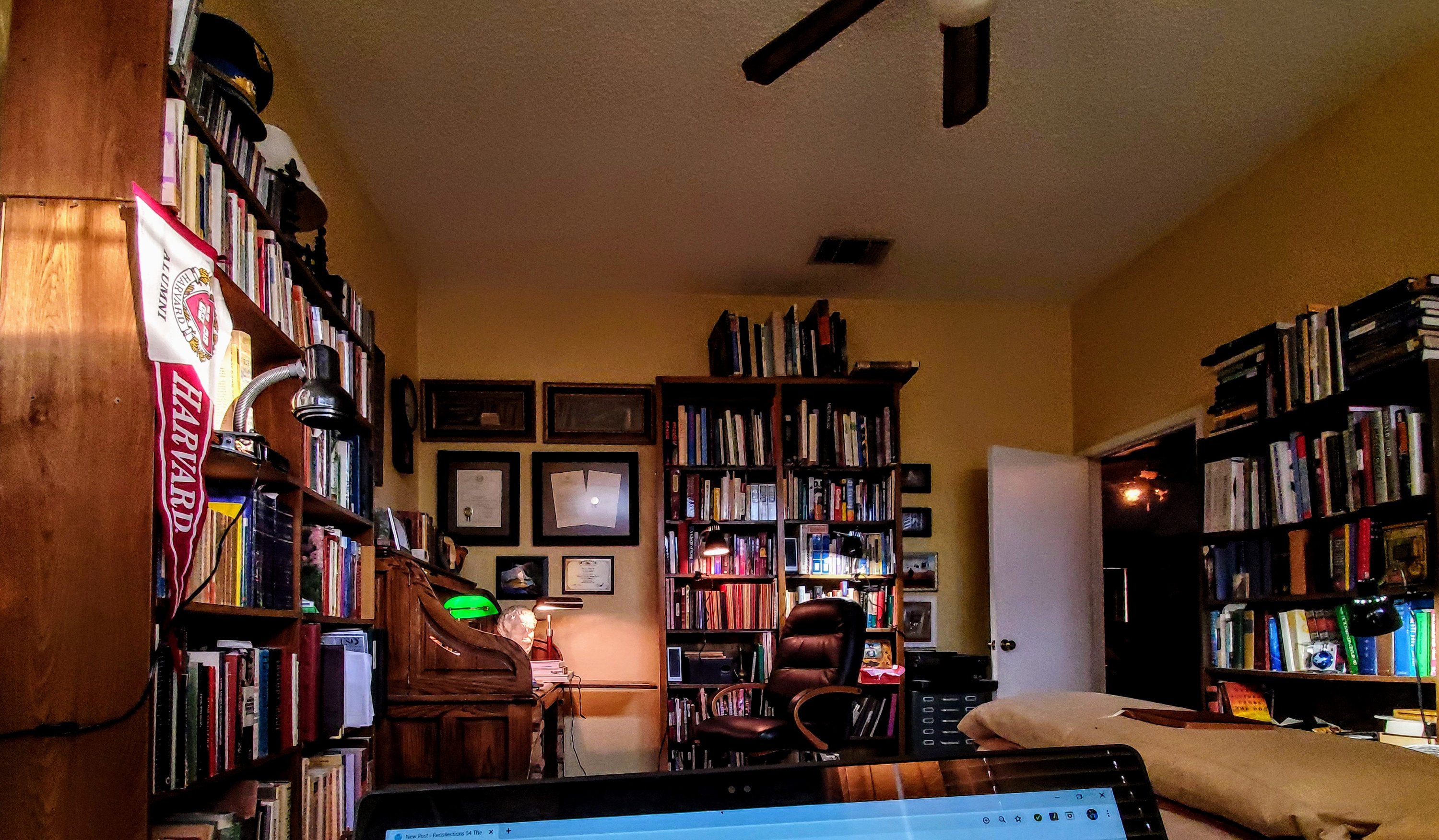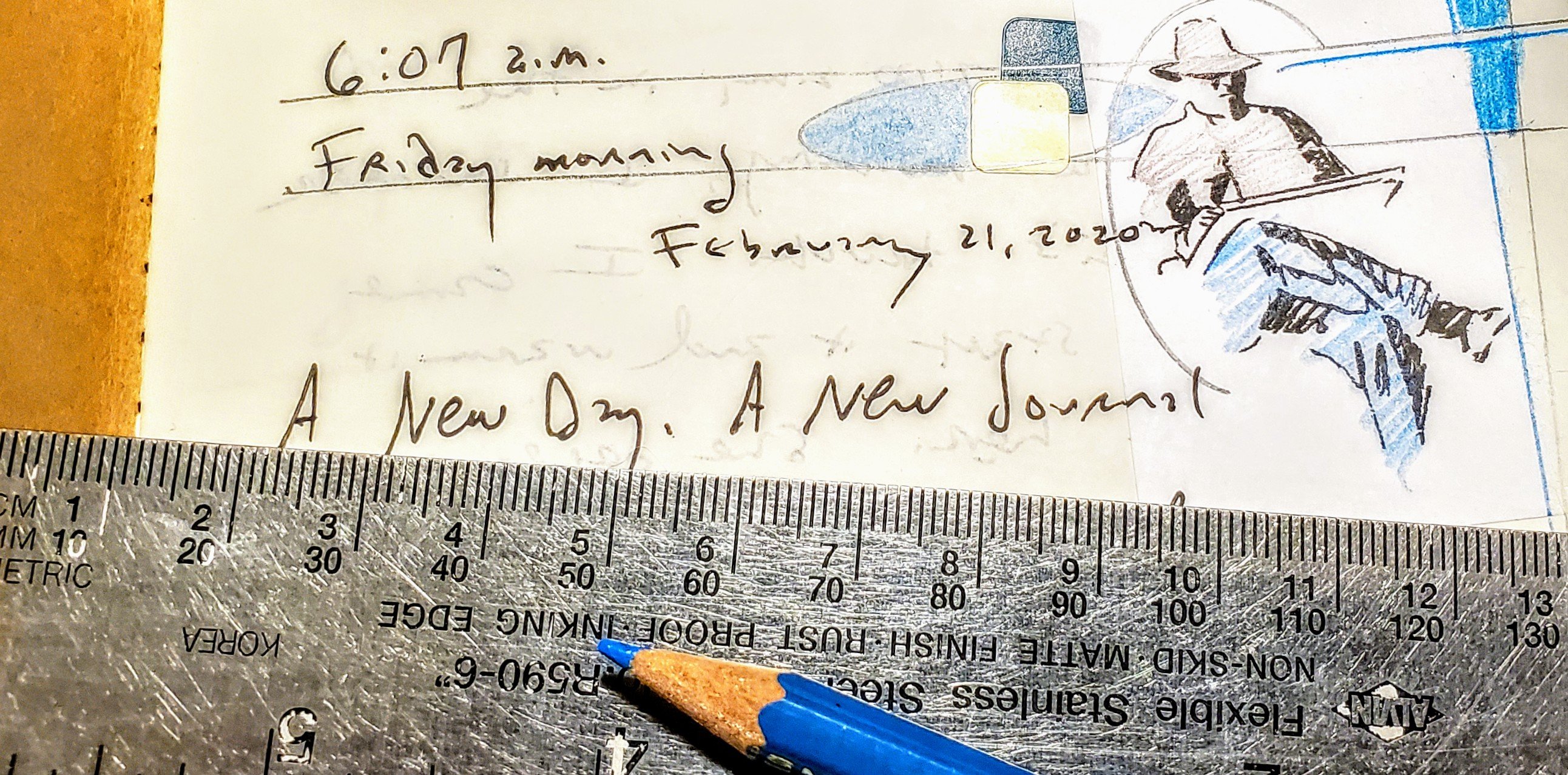

I could never imagine a better reception than what I experienced at yesterday’s Meet the Artist. I delivered my program at C C Young to introduce the audience to my show “Memories From a Small Town.” After much thought, I’ve decided to share it on my blog in its entirety. A powerpoint of the images accompanied my talk:
Memories From a Small Town

I am grateful to all of you who have traveled to see my body of artwork today. I also want to say a word to those of you in the audience who live here as well as those who work here. I hope during this month when you see my work that you can experience a feeling similar to looking through your own photo albums or cell phone pictures: to reawaken memories.
The most precious resource we carry with us throughout our days is the collection of memories we have made—memories that have made us. We have stories to re-live, to share, and my satisfaction in painting is telling those stories.
For about thirty years now, I have endeavored to paint small town America as relived through my childhood memories as well as viewed through my windshield while driving all over the Southwest and Midwest.
The celebrated French author Marcel Proust, in his expansive novel, urges that our senses have the power to transport us back to warm, primal memories from our childhood, memories that are worth holding on to. And we catch our breath when overtaken by these surprising moments. And we can never hold on to them; they evaporate as quickly as they arrive. But we are nevertheless grateful for that warm, yet brief, visitation.
Over the years I have collected my memories, written my stories and arranged my paintings into a collection I have titled “Turvey’s Corner.” This is a town I’ve made up, much like Garrison Keillor did with Lake Wobegon, Minnesota or Sherwood Anderson with Winesburg, Ohio. And I have created characters to tell the story of this American town.

It seems I can never casually drive past an abandoned filling station without turning my Jeep around and returning to walk the premises and remember the sounds I knew from the 1950’s. Who would have guessed seventy years ago that the bell cables under the tires of our cars would fall silent one day, and men in work uniforms would stop dashing out of the station to service our cars? Who ever thought that the day would end that someone would walk up to a cigarette machine inside, poke in the coins, pull the knob and hear that package slap down in the tray?

I have written stories to accompany many of the paintings in this show. Here is the one for “Jerry’s Texaco”–
Over-worked and under-rested, the aging men of Turvey’s Corner began their early-morning drive to St. Louis, twenty-three miles down Highway 30. Around the first bend of the highway out of town, they found a welcoming stop at Jerry’s Texaco. Bell cables clanged as sedans rolled up to the gas pumps, and Steve, the young attendant, pushed aside his college books to hustle out and service the customers. The aroma of coffee brewing usually lured the men out of their cars and inside for scalding, stout coffee and the exchange of local news stories. Visits here always seemed to make the workday go a little better.

He tasted the dry dust as he walked along the abandoned Route 66 thoroughfare, the hot August winds bending the roadside weeds. After twenty years away, he had resolved to return to Turvey’s Corner to see what remained. What he had not anticipated was his truck breaking down more than ten miles from the town he longed to see. Rounding yet another bend in the road and looking up at the weed-choked hill on his right, he felt his heart sink as he gazed upon what remained of the combination fireworks and souvenir shop. In the 1950’s, this establishment was one of the major draws for tourists crossing America via Route 66. Interstate 44 had managed to strangle and kill the few remaining businesses.
Pausing in silence, he felt a sense of loss as he gazed upon this relic barely peeking over the heads of the dancing weeds. But as he lingered, he slowly sensed a presence as he recalled the sounds that used to reverberate from this site. Station wagons pulling into the parking lot. Children squealing with ecstasy, leaping out of the cars to rush inside and explore. Later re-emerging, their arms laden with moccasins, beaded necklaces and tomahawks.
He recalled scenes from past Fourth of July seasons. Fathers pulling up in their cars on their way home from work. Tired from their labors, they seemed to reignite with fresh energy as they stepped inside to fill grocery sacks with Roman candles, bottle rockets, firecrackers and sparklers to take home to anticipating children.
The conflicting emotions of loss and presence flooded the man’s soul as he trudged past this scene on his way to a town he once knew.

On a personal note, I am deeply grateful for dear patrons of mine who purchased this relic of a country store and moved it to their property in east Texas. Here is a photograph of the store. The reason it resonates with me is because I grew up in small towns where people lived in the backs of the small stores they owned. I always wished I could experience living in such a space.

These wonderful owners one day handed me the key to this store, offering it as a retreat from my home in the busy suburbs of our metroplex.

I call it Heidegger’s Hut because the philosopher Martin Heidegger built a cabin in the Black Forest back in 1922 and frequently hiked the 11 miles there from his university post in the city. In this quiet refuge he wrote all his famous scholarly works, enjoying the quiet of the country. This is what I do now that I am retired and find more time on my hands for making art and thinking up new ideas.

As I sat inside the store, I was painting the doorknob behind the cash register that leads into the residential part of the store in back.

I spent an entire night working on the door knob and titled it “Beyond the Door.”

After painting the door knob, I turned my attention to the items on the shelves and commenced painting them . . .

. . . and stirring up old memories of country stores from my youth.

While painting in this remote country store, I came up with the idea of painting the Oxbow which used to be a general store in Palestine, Texas, now a popular bakery. My gallery is located in Palestine, so I spend a great deal of time in that town. As I painted the store, I thought again of those Mom & Pop country stores with the residences in back. Here is the story I wrote:
Hank was alone again in the general store, resigned to the reality that he would be closing shop late again. He would have to bed down in the storeroom in back. His college books remained on the small desk behind the counter. He had a class early the next morning, so, with the owner’s permission, he would spend another night in the back of the store. The shop was anchored on historic Route 66 on the outskirts of Turvey’s Corner. Interstate commerce had all but obliterated the sleepy town, and as soon as this fellow graduated from the community college, he would depart as well. Local townspeople and patrons had no knowledge or regard for the things that stirred the soul of this young dreamer. His volumes of Emerson, Frost, Whitman and Twain had opened to him worlds beyond this community. He would be packing up his gear in a week and leaving without notice. It was time to emerge from this cocoon and embrace the world that was calling out to him.

And finally, I am still looking for an old shed to paint so I can add some stories to this painting. One night in my garage at home, I assembled this gear from my personal collection, hoping it would look like the illustrated story of a man who had lived many years. As I sat up all night working on it, this story came to me:

When the neighbors hammered the padlock off the deceased man’s fishing shed, they peered inside the darkened room with sadness at the world of memories their dear friend had left behind. They called him Old Ned, the Porch Front Philosopher of Turvey’s Corner. Now, they looked in silent sadness at his possessions standing like sentries in his chamber. Guarding the assembly from its high perch, the kerosene lantern called to memory nights spent on the Mississippi River dike, waiting for catfish that would find their way to the Griswold skillet. The Canada Dry crate was the old fisherman’s stool for the nightlong vigils.
Bass fishing featured his Garcia Mitchell open-faced reel and the vintage wooden plugs for the area lakes and ponds. In his retirement years, fly fishing took over, and Old Ned delighted in long road trips in his Dodge pickup to the Colorado Rockies where he would vanish for weeks at a time. The battered suitcase was his lifelong road companion, as was the dark leather knapsack purchased from an old leather shop on the dusty streets of Athens during his European odysseys.
Old Ned had not been heard from for more than a week, and the inquiring neighbors were saddened to enter his home and find him in his final resting place—his favorite recliner in the small front room of the ramshackle house. His cup was still half-filled with the Dining Car Coffee he relished throughout his years working on the Frisco railroad. Now, only his possessions remained to tell his life’s story.
I call my company Recollections 54 because my birthyear 1954 still anchors me to an era vanishing from our American landscape but not from our memory.
I thank you again for coming out to my show. I love talking about my art and could do that till you either fall asleep or walk away. I will not hold this audience captive, so let me just stay that I am remaining as long as there is anyone here to talk to, and would love to answer any questions you may have about my work. Again, thank you for coming and God bless all of you.
. . . Today is Friday. I have nothing on my calendar the entire day. Searching for words to describe what I feel now seems futile. After weeks of focusing on yesterday’s presentation, I suddenly feel strange, not having an appointment to keep or a preparation to make. Now, having launched this blog, I’ll decide what to read next, what to write next, and best of all, determine that I will not schedule anything else this day. I’m thankful for quality time to fill the reservoir.
Thank you for reading. Please check out my website www.davidtrippart.com.

I make art in order to discover.
I journal when I feel alone.
I blog to remind myself I am not alone.


















































